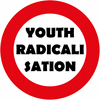Prevent Youth Radicalisation
Prevent Youth Radicalisation
About
The overall objectives are to identify and collect evidence-based approaches, initiatives, programmes, and methods that show how to:
make youth and vocational counselling services more attractive and to contribute to deradicalisation.
counteract the negative effects of alienation that occurs frequently to adolescents and which often prepares the path to join groups with extreme ideologies, be it Neo-Nazi, the Islamic State or other terrorist movements.
encourage young people to think critically about extremist messages.
provide vocational teachers and counsellors with best practice about effective tools and methods, to help them do their work better.
Follow FB page of the project:https://www.facebook.com/PreventYouthRadicalisation/
Output
The three major project outputs are the catalogue, the database, and a blog. Their implementation has been set to take place at different milestones throughout the project duration. While the discussion forum has already been implemented as the first part of the project, the integration of the other two outputs will require more attention and therefore will take place during the second half of the project.
The first output to be established was the blog. It was implemented in July 2020 and is supposed to facilitate the exchange between VET educators and counsellors working with vulnerable young people or with the integration of young refugees and migrants. Until the Database will be implemented, it also serves as a teaser for the good practice examples to come.
The database will be the second output, consisting of “good practice” initiatives and materials, concerning awareness raising, training activities and didactic tools combating radicalisation that can be used by vocational teachers, trainers, and counsellors. The implementation of the database is planned for autumn / winter 2020.
The final output will be the catalogue “Prevention of Youth Radicalisation in Practice”. It will give an overview, with explanations in all languages, about the current situation of the specific project environment in the partners’ countries.



